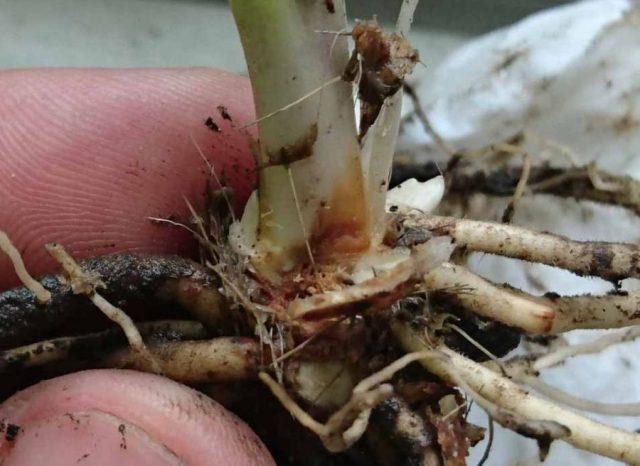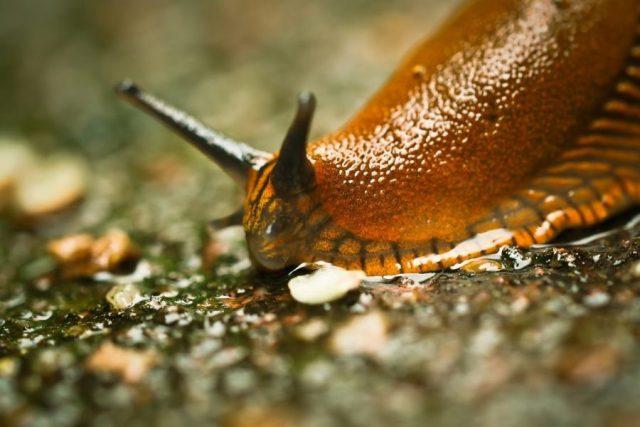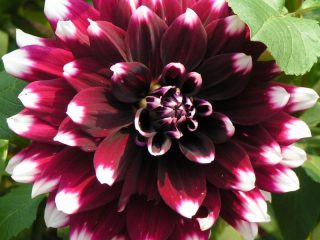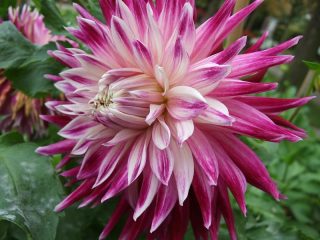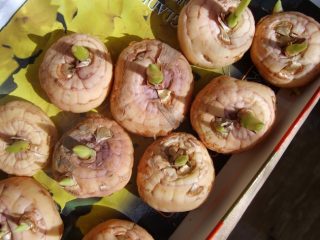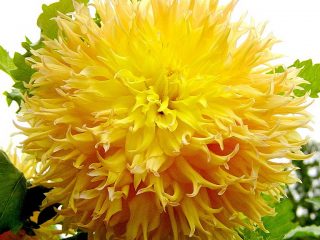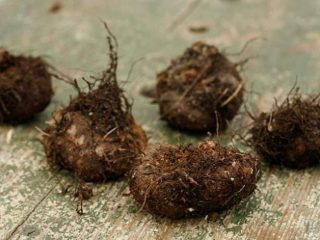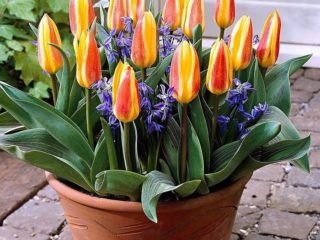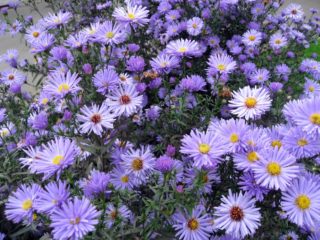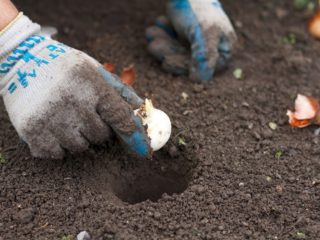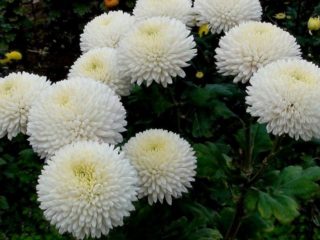Content
Chelone flower is a beautiful perennial that blooms in early fall. Before planting a plant on a site, you need to study its care requirements.
Description of the chelone flower with photo
Chelone is a herbaceous plant of the Plantain family. It has tall bare stems and dark green leaves with serrated edges, arranged on the shoots in opposite order. The length of the plates reaches approximately 15 cm.
In late summer, chelone blooms with tubular, two-lipped buds with pink or white petals. The flowers remain closed almost all the time and only at the end of the life cycle open for pollination. The fruits are round, bursting capsules with small winged seeds.
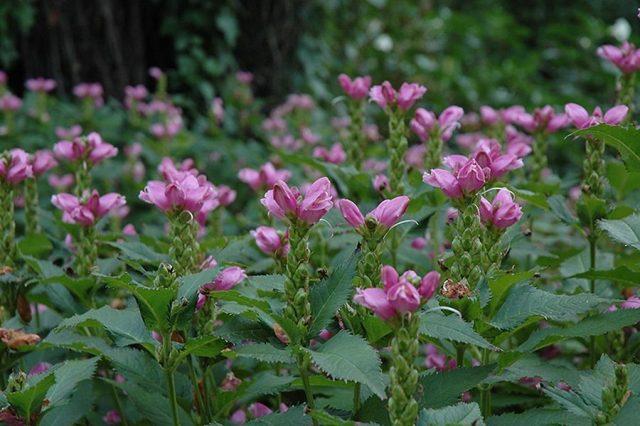
Helone reaches 60-120 cm in height depending on the lighting
The plant usually blooms in late August or early September. The decorative period ends only in October or November after the temperature drops to -7 °C.The culture is often used to decorate the autumn garden at a time when other perennials are already withering.
The flower is unpretentious and can grow on heavy clay soils. Rarely suffers from diseases and pests, tolerates unfavorable ecology well.
Types and varieties of chelone
Photos of the perennial chelone flower show that the plant is represented by several popular species. They differ from each other in size and timing of the appearance of buds.
Helone oblique
Photos and descriptions of Chelone obliqua show a beautiful perennial plant up to 90 cm above the ground. The variety has erect stems with lanceolate dark green leaves on short petioles. It blooms in late August or September; the decorative period can take up to two months. The perennial does not have complex care requirements and grows successfully in sunny and shaded areas.
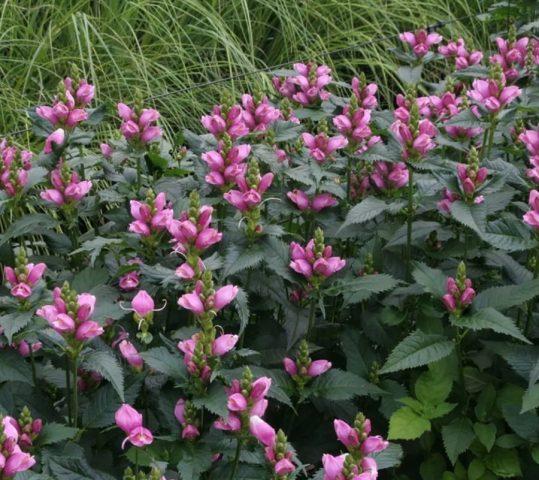
Oblique chelone finally fades only before the first snowfalls
Helone nude
Naked or smooth chelone (Chelone glabra) is a tall plant up to 180 cm above the ground. Forms beautiful, fairly compact bushes, has narrow sessile leaves. Bears creamy white buds with a slight pinkish tint, collected in spikelets. Flowering occurs from August to October, the variety is equally well suited for shady and sunlit areas of the garden.
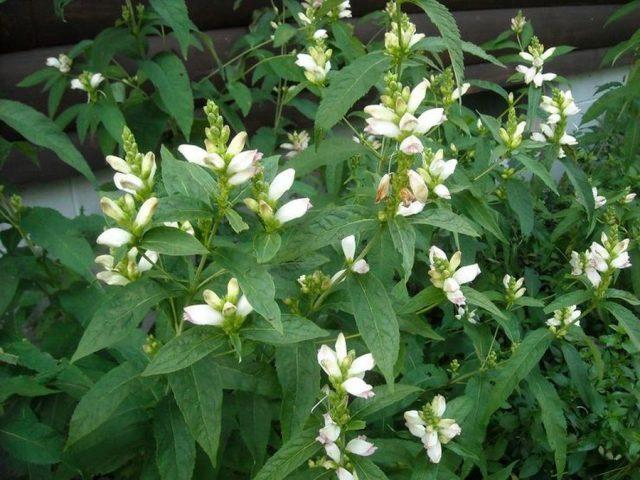
In its natural form, naked chelone is found in the northern United States and Canada.
Helone Liona
Photos of Chelone lyonii show a perennial plant up to 120 cm above the ground surface.The culture has straight stems that are not prone to branching and dark green elongated narrow leaves. It bears pink buds and looks bright in the garden.
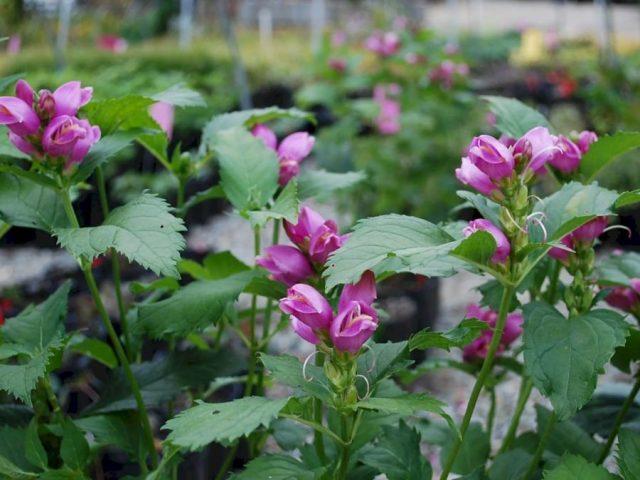
Helone Liona blooms earlier than other species - buds appear already in July
Planting and caring for chelone in open ground
The chelone plant is characterized by increased unpretentiousness and takes root in almost any area. It is only necessary to follow the basic rules of crop care.
Growing conditions
It is recommended to plant perennials in a summer cottage in a slightly shaded place. With little light, the flower develops slowly and produces buds less abundantly. However, the sun also poses a certain danger for it, since it provokes drying out of the soil.
Perennial soil needs loamy or sandy loam, with a neutral or slightly acidic reaction. The flower does not grow well on rocky and dry poor soil. Before planting a perennial in a highly acidified area, it is recommended to lime the soil. It is necessary to provide the crop with protection from drafts, since in strong winds the plant stems can break.
Planting chelone in open ground
It is recommended to plant pink chelone in open ground from mid-April to early June, depending on the climate. The algorithm looks like this:
- The area is dug up and fertilized with compost, and weeds are also removed from the soil.
- Dig holes according to the number of plants, approximately twice the size of the roots.
- Fill the holes up to half with a nutritious substrate from garden soil with the addition of humus and sand.
- Place the seedling in the hole and fill the voids with the remaining soil.
- Compact the soil and water generously.
Immediately after planting, it is recommended to mulch the soil at the roots. In this case, moisture from the soil in the area with the flower will evaporate more slowly. When planting several plants at once, it is recommended to place 4-5 seedlings per 1 m2 at intervals of at least 50 cm.
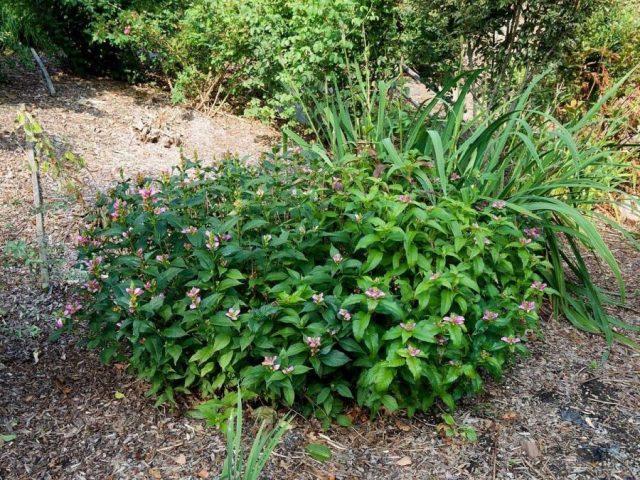
If you wish, you can plant chelone on the site in the fall about a month before the cold weather
Aftercare
Caring for white chelone on the site is not associated with great difficulties. It is necessary to pay attention to several points in the process of growing a flower:
- Watering. The perennial plant loves moisture and quickly dies in drought. The soil at the roots should not dry out; in extreme heat, the flower can be watered daily.
- Feeding. The crop must be fertilized three times per season with complex mineral preparations. In the spring, fertilizing with a high nitrogen content is used; at the end of May and at the beginning of the decorative period, phosphorus-potassium mixtures are used.
- Trimming. The flower does not need cutting, but in the spring it is recommended to remove old dry stems for sanitary purposes. It is also allowed to prune the shoots after the buds wither - this will prevent the crop from self-seeding.
For good tillering, the perennial can be pinched at the tops when growing. But it must be taken into account that the procedure delays flowering.
The culture has good frost resistance and can withstand temperatures down to -28 °C. In order for a flower to survive the winter well, with the onset of autumn it is necessary to densely mulch it at the roots with humus or dry leaves in a layer of at least 10 cm. In case of severe frost, the plant can be covered with spruce branches.
Diseases and pests
The flower has good immunity and is rarely affected by fungi and pests. But the following may pose a danger to him:
- root rot - the plant begins to turn yellow and wither, then the stems soften and the flower withers;
Root rot is caused by chronic waterlogging of the soil.
- slugs - pests attack the flower in wet weather and eat the leaves; when growing, you need to regularly inspect the plates and remove gastropods.
Sprinkling with wood ash works well against slugs.
Controlling the intensity of moisture can prevent the development of fungi. The soil at the roots of the flower should be moist, but not swampy. If symptoms of fungus appear, the plant must be treated with copper sulfate or Fundazol. The damaged parts are pre-cut.
Reproduction of chelone
Helone on the site reproduces well by seeds and division. New varieties are usually grown from seedlings; adult bushes are bred vegetatively.
Dividing the bush
The division method is recommended for adult chelone bushes over 4-5 years old. Reproduction is performed as follows:
- Carefully dig the plant out of the ground.
- Cut the rhizome into several parts.
- Remove all dried and darkened underground shoots.
- Treat the sections with a solution of potassium permanganate.
The resulting divisions must be immediately planted in separate holes. Bushes are provided with standard care.
Seeds
You can grow a flower at home through seedlings. The diagram looks like this:
- In March, plant material is sown in a container with a nutrient substrate.
- Cover the container with film and send it to a warm place.
- After seedlings form, open the container and transfer it to a sunny window.
At home, chelone is grown until the final heat is established. The flower is usually transferred to open ground in June. When grown from seeds, the perennial produces buds for the first time the following year after planting.
Helone in landscape design
Photos of oblique chelone in landscape design show that the perennial is used very widely when designing a site. The plant is planted in small groups and clumps, combined with geraniums, coreopsis and asters.
It is recommended to place the chelone next to bodies of water in a summer cottage. The flower grows well in shaded corners and allows you to decorate places where other perennials do not take root. The crop is often placed next to shrubs and trees, as well as against the background of ornamental grasses.
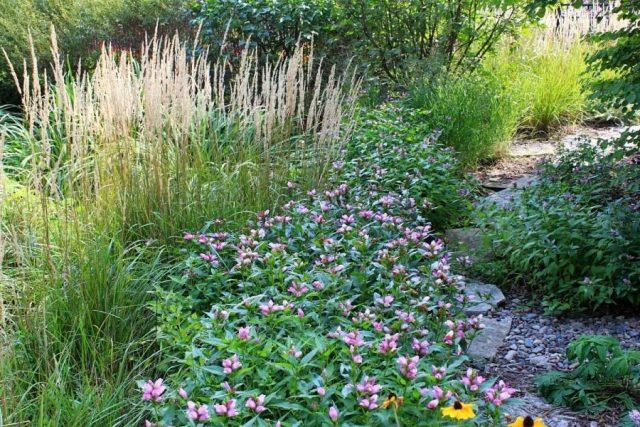
Helone can be planted along a garden path as a low border.
Conclusion
Chelone flower is an undemanding plant. It blooms quite late and can decorate the garden before the onset of cold weather. Suitable for planting in shaded and damp areas.
Reviews of the chelone flower
